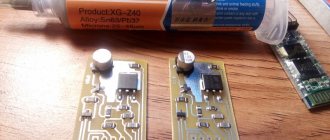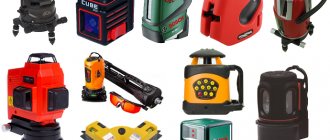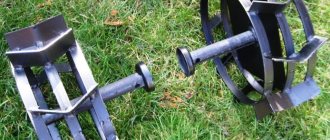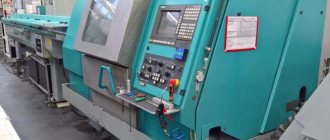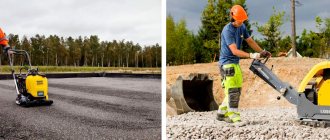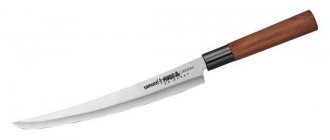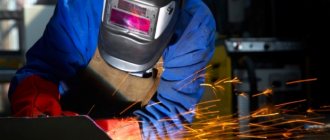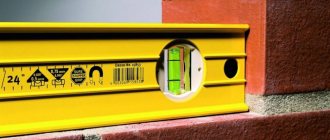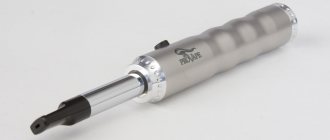Peculiarities
A laser engraver is a special device that performs several functions. It can be used to cut material and apply markings. The laser engraver is universal and can work with metal, wood, acrylic, and glass. It is completely safe, and also has a high speed of completing tasks.
Also, the metal laser engraver is equipped with CNC (computer numerical control). In other words, the device works like a computer. It is enough to select a design, set its dimensions and determine the type of material - everything else will be done automatically.
Important! When using a laser engraver, you must not forget about safety precautions, otherwise you may get injured.
The equipment can be used at home. The main thing is to choose the right model. Anyone can master the art of engraving.
Engraving machine brands
We present equipment from the most famous European manufacturers.
SHARPMARK FIBER series engravers from SHARPLASE
SHARPMARK FIBER laser fiber machines perform a wide range of production operations:
- engraving, marking and cutting of metal, plastic, stone, leather, various polymers;
- engraving and marking of products and parts used in industry;
- jewelry engraving;
- engraving of souvenirs, gifts, corporate identity items;
- production of seals and stamps;
- 3D engraving;
- application of photorealistic images and much more.
These machines consist of 3 modules: a laser emitter, a marking module and a work table. The equipment is lightweight and compact in size. If necessary, engravers can be equipped with additional equipment.
The engravers are equipped with IPG Photonics emitters. The work stand is equipped with a Z-axis movement screw with a frequent thread pitch. This makes it possible to set the focal length with an accuracy of 0.01 mm. Marking accuracy is up to 5 microns, repeatability is up to 2.
Software features:
- laser machine control;
- monitoring and testing of laser equipment in real time,
- import of graphic information in formats: *.BMP, *.JPG, *.DFX, *.STL;
- support for all TRUE TYPE fonts;
- support for vector and raster operating modes;
- working with text and graphic images;
- working with three-dimensional graphics, setting the depth of each level;
- rotation, reflection, scaling, grouping of images;
The machines are equipped with a light identification system that informs the user about the completion of work, the occurrence of errors and malfunctions.
| SharpMark engraver models | Working field, mm | Marking speed | Fiber emitter | Power | Lens | Scanning system | Additional functions |
| Fiber Standard and Fiber Standard VAR | 110x110 | 7,000 mm/s | Pulse/variable pulse (VAR) | 20, 30, 50 W | F 163 mm | 2-axis high-speed IMD scanner (USA) | |
| Fiber Optima and Fiber Optima VAR | 180x180 | 10,000 mm/s | Pulse/variable pulse (VAR) | 20, 30, 50 W | F 254 mm | 2-axis galvanometric scanner IMD (USA) | “High Contrast” option Deep 3D engraving Engraving and marking of large items |
| Fiber PRO and Fiber VAR PRO | 110x110 | 10,000 mm/s | Pulse/Variable Pulse (VAR) | 20, 30, 50 W | F 163 mm provides ultra-precise 3D focusing manufacturer Lambda (USA) | High-precision scanning mirror system Cambridge Technology (USA) | “High Contrast” option Deep 3D engraving Engraving of conical products Shaped cutting Built-in video camera Illumination of the work area |
| Fiber PRO XYZ and Fiber PRO XYZ VAR | 600x400 | 10,000 mm/s | Pulse/variable pulse (VAR) | 20, 30, 50 W | F 160 mm Lambda (USA) | Cambridge Technology (USA) | Processing of non-standard products Automatic duplication of objects Deep 3D engraving Cutting thin metals “High Contrast” option XYZ axis control controller Illumination of the work area Built-in video camera |
TruMark 5000 Series laser machines from TRUMPH
TruMark 5000 Series fiber lasers are versatile machines for marking and other applications.
Functionality of TruMark lasers:
- high-speed application of text markings using various methods: - changing surface color; — deep engraving; - change in color of the material; — removing layers from the surface; — foaming – used for applying raised inscriptions;
- surface structuring;
- laser cleaning of surfaces.
Lasers are designed to work with metals, synthetic materials, glass, silicon, ceramics and organic materials.
TruMark machines combine high power, high pulse frequencies and variable pulse durations to deliver excellent machine performance. High pulse frequency is a feature of TruMark lasers that ensures high speed operation. The pulse duration can be adjusted according to the type of material being processed and the production task. The power can be monitored using the built-in measurement system and adjusted if necessary. Quick adjustment of the focus position is carried out by changing the diameter of the laser beam. The focus adjustment system is controlled via the TruTops Mark software and allows stepped parts to be marked in one stroke without moving them mechanically.
TruTops Mark software features:
- inscription function;
- creating and organizing graphic objects in a CAD editor;
- the ability to create programs that control the full cycle of inscription application, thanks to the programming of QuickFlow algorithms;
- saving optimized parameters in a database for reuse;
- a diagnostic tool used to visualize and analyze measurements obtained by sensors;
- control of laser parameters and interfaces.
The machines have a modular design, modules are quickly connected via plug connections.
INFIBER laser marking and engraving systems from Oltek Photonics
INFIBER are high-performance fiber laser engravers and markers designed for marking various types of materials. These machines are in demand in various industries: electronic instrument making, production of household appliances, mechanical engineering, high-precision metalworking, production of medical instruments.
INFIBER laser markers allow you to apply logos, dates, serial numbers, linear and two-dimensional barcodes, etc.
Advantages of INFIBER models:
- ultra-compact aluminum marking head with protection class IP 64;
- built-in programmable “Green Spot” controller, providing instant visual display of the signal on the marked surface;
- support for innovative Lighter Marvis software;
- built-in SLO (Safe Laser Off) mode with a double relay for blocking laser power, as well as maintaining laser control mode with double feedback;
- silent operations;
- built-in communication protocols: Ethernet TCP/IP - Ethernet IP and ProFinet (1Q2019).
Advantages and disadvantages
The advantages of a laser engraver include:
- accuracy of drawing;
- ability to work with different types of materials;
- simple controls;
- waste-free production.
The main advantage of the device is automation. Thanks to software control, the likelihood of error is minimized. However, they are not excluded and you need to learn how to use an engraver.
With a sufficient level of skill, you can cut out complex designs
However, the equipment also has disadvantages. During the cutting and engraving process, it is impossible to adjust the depth of the design. Therefore, the surface will be non-uniform and this is not always good. In addition, not all materials tolerate laser treatment well—they become deformed under the influence of high temperatures.
Another drawback of the engraver is its low productivity. Even with a powerful model, it can be difficult to produce a large batch of products. You will need to take breaks.
What you should pay attention to when choosing equipment
When choosing a machine, you need to consider a number of factors:
- Dimensions of the structure, desktop.
- Engine power.
- Model of laser equipment. Imported samples are more expensive.
- Availability of software.
- Machine performance. Its ability to be used for a long time without interruption.
- Type of cooling system.
- Quality of the focusing lens system.
- Laser beam power.
- Availability of additional functions. For example, a separate system that removes excess production from the work area.
It is important to understand that CNC machines require knowledge in programming, troubleshooting, and creating algorithms. Beginners are advised to buy Chinese models, which are cheap. It’s convenient to hone your skills on them; it’s not as bad to ruin them as professional models.
Kinds
Before choosing a laser engraver, you need to decide on its type. This will help save money. In addition, with the right choice, you can find equipment that will be ideal for performing the assigned tasks.
Important! It is not necessary to consider only European or American brands. Among the Chinese there are also many worthy brands.
By source type
There are two varieties:
- Electrical. Just plug the device into a power outlet and it will start working. However, it can be difficult to move it to another location due to the length of the cable.
- Rechargeable. Portable models that are easy to move. However, they work for a limited time, after which the device will have to be charged.
There are also two types of engravers:
- Gas. Inside the device there is a tube containing a gaseous substance. Suitable for applying designs to leather, wood, plastic, glass, etc. Does not work with metals.
- Solid state. Solids are used as the active medium. Works with most materials. They are more expensive than gas ones, but are more suitable for industrial work.
By working surface area
Desktop engravers are suitable for home use. They do not take up much space and allow you to work with small batches of materials. However, they do not always provide a good view of the work surface.
Desktop engraver fits easily on a regular desk
Medium-sized devices offer great capabilities. They can handle a good amount of work, but they will need space. For example, in a garage or separate room.
Industrial machines with an area of 1.5 m are suitable for large-scale production. Special workshops are used for their installation. In addition, working behind them will require special qualifications.
By power
Choosing an engraver for your home is not such an easy task. The higher its power, the better the performance, but at the same time energy consumption increases. At the same time, there is one more nuance: the thicker the material, the stronger the device should be.
Therefore, before choosing a laser engraver, you should decide on the prospects. So, to work with materials up to 5 mm thick, a 15-20 W model is sufficient. Only the speed of this model is low and the work area is small. If you increase the power, the engraver can handle a 10 mm sheet.
A device of 80-100 W is enough to work with metal, plywood and other materials. This will give you good speed and working area. There are engravers with a power of 100-200 W - this is typical for industrial work.
For reference! For powerful devices, sometimes a conventional 220 V outlet is not enough. When choosing, you must pay attention to this.
What factors are taken into account when choosing an emitter for a machine?
The Wattsan company equips its laser metal cutters with products that are most in demand on the market, the production of which is established by manufacturers: IPG, MAX Photonics, Raycus.
The power range of the mentioned emitters is quite wide, 0.35-25.0 kW. The service life of products declared by the manufacturer exceeds 5 years. The products are distinguished by significant efficiency and reliability, and efficiency (the ratio of energy consumed and its resulting value) can reach 30, and for some models, 50%.
For machines in the Wattsan line, there is a direct relationship between the thickness of the frame and the power of the emitters installed on them:
- Equipment with a frame whose thickness does not exceed (8.0-10.0) mm most often receives emitters whose power does not exceed 2 kW;
- Equipment with more powerful (10.0-12.0) mm frames is equipped with emitters, the power of which is set in the range (1.5-6.0) kW;
- The most durable frames, the thickness of which is (12.0-16.0) mm, are obtained by emitters with N≥4kW.
Wattsan machines are designed to operate at the highest available speeds with emitters up to 6 kW (inclusive). Even when the workpiece is thin sheet metal.
The relationship between equipment parameters such as the body and maximum permitted speeds is discussed in a special article and discussed in detail in this video.
Practice shows that the vast majority of workpiece materials of varying thickness can be efficiently processed with a fiber laser of similar power. Therefore, it is not economically feasible to purchase a “cooler” machine. The largest percentage of purchased machines have emitters with a power of one or two kilowatts.
Why do you need a laser engraver?
You can find a reliable device, but first you need to decide on the scope of application. For example, making drawings, decorative finishing of packaging, making souvenirs and much more.
Powerful laser engravers are indispensable in funeral agencies. Using the program, the wizard determines the text, drawing, and equipment performs the task. Another option is to make tombstones.
Important! The more multifunctional the device, the more expensive it is. But there are more prospects with him.
The choice of engraver must be made taking into account the complexity of the work. To create complex designs such as barcodes or stamps, fine tuning is important. Engraving is mainly in demand in the field of advertising and the manufacture of souvenirs.
Scope of application of engravers
In terms of their functionality, engravers are used wherever it is necessary to finely apply patterns, barcodes, stamps, drawings or inscriptions on various surfaces, including complex shaped ones.
This:
- applying artistic patterns to wooden products;
- production of packaging, incl. decorative;
- outdoor advertising;
- production of souvenir products from metal, wood, glass, plastic, stone;
- drawing patterns on leather materials, in the textile industry - cutting complex materials.
The engraving machine is also successfully used in funeral services for engraving inscriptions on monuments.
How to choose
It is not necessary to buy the most expensive engraver. There are decent cheap models. When choosing, several criteria are taken into account - purpose of application, materials, key characteristics and performance. This will help you buy a truly useful device.
Purpose of application
Laser engravers are needed in the following cases:
- production of souvenirs;
- jewelry making;
- production of awards;
- creation of advertising products;
- light industry.
Materials for processing
The more options the better. If you plan to work with a limited amount of materials, then you can choose a simple model. For example, which works with acrylic, MDF, plywood. Metal and leather will require powerful engravers.
Key Features
When choosing, you need to pay attention to:
- laser beam accuracy;
- size of the working area;
- software.
Consider the presence of a cooling system. It prevents equipment overheating and increases operating speed.
Industrial engravers are equipped with an automatic conveyor
Performance
For a “kettle”, a device up to 60 W is suitable. When working with metals, power up to 100 W will be required. All the above are industrial models.
Maintenance Features
In order for your laser engraver to last as long as possible, it is necessary to properly care for it. Maintenance can be carried out at the following intervals:
- Daily care. It consists of performing simple steps: keeping the optics clean, checking the compressor in a timely manner, cleaning the cone head from carbon deposits, and adjusting the focus.
- Weekly care. At this stage, it is worth checking all electrical equipment for serviceability. If you have a cooling system, it is better to check the amount of fluid once a week and lubricate all necessary mechanisms.
Do not neglect regular maintenance of the laser machine - then the equipment will work smoothly for a long time.
Top best engravers
If you look at products from China, Europe or the USA, you can find a lot of models. It is difficult to understand the nuances, so it is better to refer to the ratings.
Best in terms of price-quality ratio
KKmoon brand models are characterized by low cost and good performance. For example, models K4 and K5 are equipped with built-in fans. The working area is large - you don’t have to worry about your hands.
You may consider purchasing the VG-L7 Laser Engraver. Works with soft materials and does not require firmware. Compact.
A standalone controller eliminates the need to connect a computer
Universal laser engravers
Here it is worth highlighting the following models:
- NEJE DK-8-KZ - good speed and accuracy, can be used together with a smartphone.
- WOLIKE Mini 3000mW - air-cooled, compact.
- FEUNGSAKE 6550 - durable, variable focus, adjustable power.
Mini engravers
The top includes devices:
- NEJE DK-8-KZ - compact, runs on a mobile power source, supports bmp and jpeg formats.
- TwoWin 3W - high accuracy of drawing, durable body, good speed.
Professional laser machines
The best rating is presented:
- HCZ 6090 - can cut parts, high speed, continuous process.
- HCZ 30w - software in Russian, accuracy, durability.
Key equipment characteristics
When the choice of equipment for laser engraving has been made according to the above criteria, we move on to the main characteristics of the machine. These characteristics are crucial for subsequent successful operation, and focusing on them can save a lot of money when purchasing.
5.1. Laser power
The amount of power is directly proportional to the overall productivity of the engraver, including processing speed. However, there are some peculiarities. For example, with high power, you can process harder materials, just at a slower speed. The downside of this option is high power consumption
5.2. Machine cooling system
There are options: whether the laser generator is equipped with such a system or not. The duration of continuous operation of the engraver depends on the cooling system. In addition, the cost of the machine directly depends on this parameter. When choosing a cooling system, we pay attention to the manufacturer and the technologies used. Branded products last longer than cheap Chinese counterparts, although, accordingly, they are more expensive.
5.3. Optional – electric drive and table lighting
Despite its simplicity, the electric drive of the table greatly facilitates laser control. Since the auto-focusing function of the beam is activated, which improves the engraving accuracy. The electric drive is used mainly in industrial or professional machines that work with large volumes of materials, and illumination of the work area makes it easier to control operations.
5.4. Software interface
Please note the variety of functions that can be reprogrammed. We will also make sure that the interface is easy to learn and its functions are intuitive.
If you plan to use a laser engraver on an industrial scale, you should think in advance about such a thing as the cost of a standard hour of operation of the machine.
Features and advantages of Chinese products
Among Asian engravers you can find models of different sizes. They have an average cost, but some people have distrust of such products. Modern Chinese production has high quality standards.
Important! When choosing an engraver, it is important to remember that the cheapest models do not differ in quality and performance.
The advantages of Chinese devices include:
- thoughtful and functional software;
- the plastic case is no worse than the metal one, but costs less;
- wide range of possibilities.
The peculiarity of engravers from China is the variety of forms. You can find a tabletop or manual version, also semi-industrial. Some models can accurately reproduce a seal or stamp - this function is needed for making corporate gifts.
You can apply text of any level of complexity to the material
When choosing a laser engraver, it is important to study the features of different types of devices. Only after this can you begin to search for specific models. This will save time and money.
Types of engravers and differences
The next step is to select a device based on the type of laser beam source. There are 3 types of engraving machines based on this feature:
- solid state;
- gas;
- hybrid.
In comparison with traditional methods of electrochemical and mechanical engraving, laser engravers show better characteristics in such parameters as visual appeal, pattern durability, and the ability to mark a product in series or in a constant technological cycle.
Engravers of the first type (including their varieties - fiber lasers) are designed to work mainly on hard surfaces: metal, plastic. They are distinguished by the highest quality and precision of patterns. However, these engravers do not mark wood, cardboard, or glass.
Gas engravers operating on CO² have proven themselves excellent on plastic, paper, ceramics, plexiglass and glass, rubber, and wood. However, metal as a material is not available for marking with this type of engraver. There are also restrictions on the size of working areas and the types of images displayed. For example, the inaccessibility of vector graphics images.
Hybrid devices combine CO² and fiber lasers, providing the advantages of both in “one bottle”, but losing in narrow specialization.
